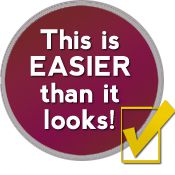
The Financial Accounting Standards Board (“FASB”) sets the standards for what is known as “GAAP” which stands for generally accepted accounting principles. You may or may not be aware that the FASB has set new revenue recognition standards that will go into effect for private companies in just a couple of months which is January 2019 (it has already gone into effect for public companies as of January 2018). This new revenue recognition standard re-classifies how revenue is recognized, specifically when a business collects a fee under a contract and subsequently will have an effect on franchising. Our President Dave (read about Dave and the history behind The Franchise Maker) just returned from a conference whose feature speaker was one of the seven members of the FASB that created this new revenue recognition standard. In fact, Dave spent some time after the presentation to talk with this presenter to get further clarity. Bottom line, the purpose for this new standard is to ensure that revenue collected can be accurately matched with performance. This new revenue recognition standard was not intended for the franchise industry but unfortunately will affect it. So what does this new revenue recognition standard mean for you if you choose to franchise your business? Let’s shed some light on things now. Keep in mind this is still evolving and things may change.
The Revenue Recognition Rule Standard
In this article, we are going to use the example of a franchise fee because that is something that is collected under a contract (Franchise Agreement) by every franchisor and is easy to understand (learn about what is a franchise fee and how it is determined). Technically under this new revenue recognition standard a franchise fee would have to be amortized over the full term of the Franchise Agreement. The franchise fee can still be collected upfront; however, the new revenue recognition standard states that such fee cannot be recognized in full as revenue the year it is collected. So for example: let’s say a franchise fee is $10K and the term of the Franchise Agreement is 10 years. Under this new revenue recognition standard, the franchise fee for the franchisor (you in this equation) would be amortized at $1K each year throughout the 10-year term. It is like when you buy a piece of equipment for your business and the money you spend for it has to be amortized over a certain period of time. You cannot expense the full cost of the equipment in the year you bought it. Instead, you can only recognize a portion of the expense each year over a certain number of years that is determined by a scale your CPA uses. Yep, we’ve all been there.
An Exception to the Rule
There is an exception, but it is tricky. If a fee is collected (in this case a franchise fee) can support a “standalone selling price determination” then the franchisor (you) would not have to amortize the franchise fee. In layman terms this means that if the franchise fee can be deemed fully earned prior to the franchisee’s business being opened for operation; then it does not need to be amortized. In other words, a franchisor must be able to demonstrate that the franchise fee charged to a franchisee is fully earned by the franchisor before the franchisee’s business is open for operation (as opposed to being fully earned once the term of the Franchise Agreement is over). So this is good news which means, that if a franchisor’s (your) franchise program is developed correctly, a franchisor may be easily able to demonstrate that what a franchisee gets for the franchise fee collected is fully earned before the franchisee’s business is open for operation (such as: training, the operations manual, a start-up supply of inventory and pre-opening assistance just to name a few). In other words it matches deliverables with revenues collected and in Dave’s conversation with Jim Kroeker (who was the featured speaker at the conference alluded to above) he agreed this statement sums it up.
It’s All About How Your Franchise Program is Setup
It’s not too difficult to understand because it’s all in how the franchise program is setup and the verbiage in the Franchise Disclosure Document (see an article that describes the different elements of a Franchise Disclosure Document). There may be certain elements of the franchise fee that cannot be demonstrated as fully earned. Any element of a fee that is collected up front under a contract (in our example the franchise fee) that cannot be demonstrated as fully earned will need to be amortized over the term of the franchise agreement under this new revenue recognition standard. A great example is if a franchise fee is padded in order to pay a franchise broker his/her commission (find out why you should be careful with franchise brokers). This means if a franchisor is charging a $40K franchise fee and $20K of that fee goes to pay a franchise broker (which is common), then as of today the new revenue recognition standard requires that the $20K the franchisor paid to the franchise broker, which is considered part of the franchise fee, would need to be amortized over the term of the franchise agreement. This means a franchisor can collect the full franchise fee but cannot record the entire franchise fee as revenue in the year it was collected. In this example the franchisor may only be able to claim $20K as revenue in the fiscal year the franchise fee was collected and amortized $2K per year for the next 10 years for the franchisor broker fee. This of course could significantly reduce a franchisor’s net worth which subsequently could lead to some significant challenges in franchising. The $20K that was left over after the broker fee may be able to be claimed as revenue. We say may because it depends on the deliverables defined for that remaining balance. Besides franchise broker fees there are other things such as access to software that may be included as part of a franchise fee however would fall under the new revenue recognition standard that (yep you guessed it) would have to be amortized. The reason for this is because access to software is not considered fully earned since it is constantly being used throughout the entire term of the Franchise Agreement. This means unless your franchise program is built with a clever solution, you must come up with the value for the software provided as part of the franchise fee and amortize that value over the entire franchise term.
It’s Fair and Not Disastrous for Franchising
When we build your franchise program (read about our strategy when building your franchise program) there may be certain elements that would fall under this new revenue recognition standard. We have solutions to help you avoid amortizing your franchise fee. This article is intended to give a basic understanding of the new revenue recognition rules as it pertains to franchising on a very simple level. Other nuances in franchising such as value assigned to intellectual property, Area Development arrangements (collecting an Area Development fee upfront), etc. make it more complicated and appears to fall in the amortization bucket. At the conference alluded to above, also lead by a prominent franchise attorney who orchestrated the presentation, there was not much detail provided and sadly the attorney leading the presentation shrugged his shoulders when Dave asked him about Area Development fees.
When reading this article, we hope that you are able to walk away with a basic understanding that the only thing that is amortized when it comes to a fee under a contract are those things that cannot be demonstrated as fully earned upon receipt. These revenue recognition rules should not deter you from franchising your business because if your franchise program is built correctly then it becomes a non-issue for you (you can read about our customized franchise development services in this article). If you are wanting to learn more about franchising and how you may be affected by the new revenue recognition rules call us directly at 1-877-615-5177.




